<Expat's Chat BAR> Snacks from around the world
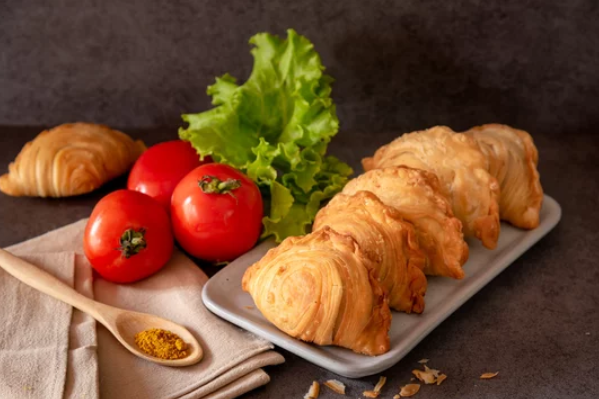
___________________________________________________________________________________________________________________________________________________________________
Intage expats hold monthly information exchange meetings, where we could hear a lot of valuable information that is difficult to know unless you are living in the country. The "expat’s chat bar" is a new initiative that brings together this kind of information by theme.
What are the differences in the everyday snacks and frozen foods in each country? We asked expats in each country to talk about what they like and what kinds of foods they enjoy, based on their own perspectives. In this issue, we will start with the "snacks" section.
▼Participants
Aoba (Expat in Thai, Male)
Suhara (Expat in Singapore, Female)
Park (Local employee in Singapore, Male)
Okayama (Data Spring employee often in the Philippines for business trips)
Nakamura (Expat in India, Male)
Kashii (Expat in Shanghai, Male)
Sekio (Expat in Shanghai, Female)
Imamura (Expat in Vietnam, Male)
Paul (Post Expat in Vietnam, Korean, Male)
Tatsuda (Works in Tokyo HQ, Male)
Fong (Host) (Works in Tokyo HQ, Malaysian, Male)
Singapore
Park (Singapore): My Malaysian wife loves squid (dried squid = Surume), so these Surume-like snacks are always stocked at my house.
Tatsuda (Japan): Are those different from Japanese Surume?
Park (Singapore): They are little different and different kind of flavors are added to them. Some even have sugar on them.
Fong (Moderator): There are spicy ones, too. In Malaysian night markets, squid is grilled and sold with sugar. It is a traditional food.
Park (Singapore): And speaking of things everybody like, what about curry puff?
Suhara (Singapore): I don't know if they are called snacks, but they are like curry pies with ingredients inside of big baked dumplings.
Park (Singapore): Curry puff is a local traditional snack with various ingredients such as potato, chicken, and sardine inside.
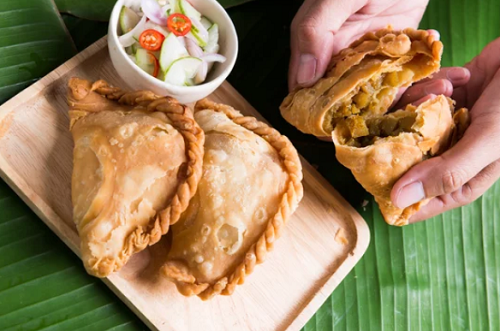
Tatsuda (Japan): Those look like a snack that could be found in India. Wonder if it has anything to do with India.
Park (Singapore): Oh, it might be similar to Indian Samosa.
Park (Singapore): Then there are things like shrimp flavored crackers called "Keropok" (keropok), which Malay people often eat. It comes in a big tin and is very popular in our office. Once you open it, it won't last two days.
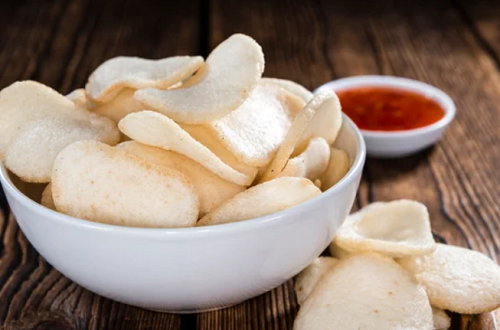
Suhara (Singapore): I also like these a lot. Maybe it's a Malaysian snack.
Fong (Moderator): Many of them are from Malaysia.
Suhara (Singapore): I ended up buying snacks from Malaysia or Japanese ones from Donki (Discount Mega warehouse store) , or Western ones from regular supermarkets.
Park (Singapore): These days, I buy things from Thailand. Not many unique Singaporean snacks, but local chips such as Mara Chips.
Korea
Tatsuda (Japan): It's not really snack and it’s actually an ice cream, but I like a Korean ice cream called "Melona" because it is very good.
Tatsuda (Japan): You can't find it in Japan, but when I went to Brazil on a business trip, I found it and had to buy it.
Paul (used to be an expat from Vietnam): It made good sale in Brazil and South America and is very popular because of its strong melon flavor and contains a lot of milk. In Korea, people sometimes eat this melona after drinking alcohol.
Imamura (Vietnam): Korean honey butter chips are also popular in Vietnam.
Park (Singapore): You can always find these at Korean convenience stores in Singapore.
Kashii (Shanghai, China): These potato chips are also sold in China. Also, Lotte and Orion's Choco Pies (cream sandwiches dipped in chocolate, individually wrapped) are getting into the market.
Paul (ex-Vietnam): Speaking of Choco Pie, there are so many varieties of Choco Pie sold in Vietnam than in Korea, and it is sometimes cited as a successful case of marketing to mom-and-pop stores in Southeast Asia.
Imamura (Vietnam): They certainly sell them everywhere.
China
Kashii (Shanghai, China): China is a mix of localized, imported, and local snacks. I usually eat locally produced Oreos or Thai seaweed, and the only Chinese brand I've eaten is something like Nougat. I also eat more moon cakes and such than snacks.
Sekio (Shanghai, China): And sweet chestnuts and beef jerky.
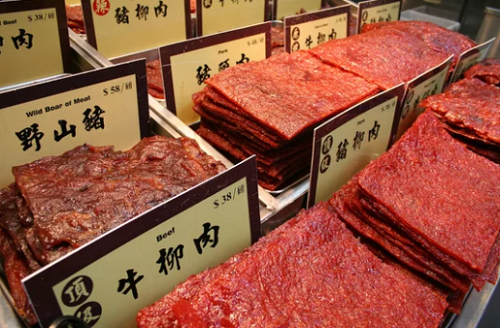
Kashii (Shanghai, China): Oh, yes, yes. Sweet chestnuts and jujubes. There are still many stores in Shanghai that sell sweets, dried beef, dried fruits, etc. by weight, like candy shops.
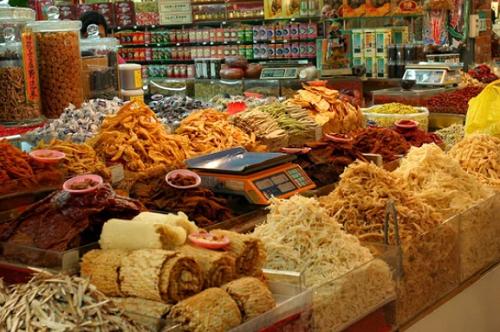
A sample photo of a weighing store
Nakamura (India):Even in India, people buy samosas and other homemade snacks for snacking.
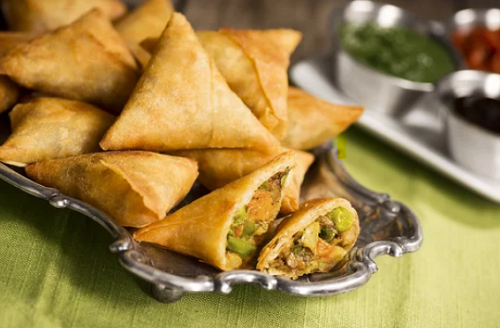
Nakamura (India): Then there are also many local snacks, like biscuits and cookies like this.
Nakamura (India): I eat these chocolate cookies with RAYS masala flavored potato chips.
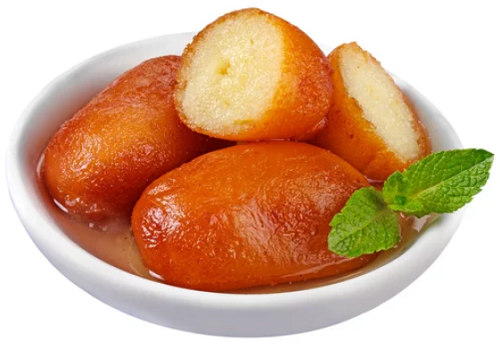
Gulab Jamun: An Indian cake deep-fried in oil and dipped in sugar water. It is characterized by its extremely sweet taste and is called "the sweetest candy in the world.
Vietnam
Imamura (Vietnam): Personally, when I think of snacks, I tend to buy things like potato chips from Koikeya, but I think local snacks are often sold at street stalls around town. I think most of the local snacks are made from rice, such as dried rice paper with spicy seasoning and eaten crispy.
Fong (Moderator): Yes, Vietnam is the world's largest rice consumer.
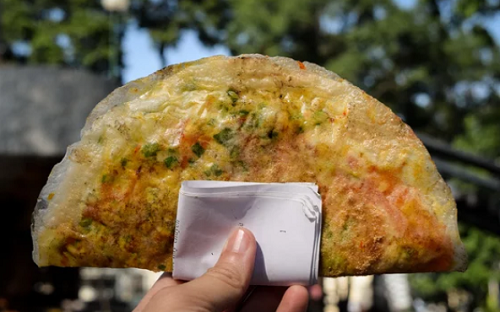
Thai
Aoba (Thailand): It is difficult because I don't eat snacks myself, but in terms of snacks in a broad sense, Thailand is rich in fruits, so I tend to eat fruits and juices. Local fruits are also abundant, but in large lots, so I tend to buy and eat only apples and bananas.
<Summary>
In Singapore, snacks similar to Malay and other countries' snacks and Indian sweets are eaten, which seems to be a truly multiethnic country. I was also impressed by the fact that in India and Vietnam, a certain percentage of people still eat sweets from street stalls, and even in Shanghai, a large city in China, traditional sweets are still sold by weight.
In the next issue, I plan to introduce instant cooked foods, frozen foods, and others. Please look forward to it!
-

Author profile
Fong-Tat CHEW
I am a Malaysian researcher.
I have been in Japan for the past 15 years and am still based in Tokyo, Japan, where I communicate about insights from Southeast Asia and other parts of the world. -

Editor profile
Yukiko Usui
Even in Japan, we can enjoy quite a variety of cuisines from many different countries, but the realm of confectionery is still very deep.
- Nov 22, 2022
- 2673 Views
 Global Market Surfer
Global Market Surfer CLP
CLP